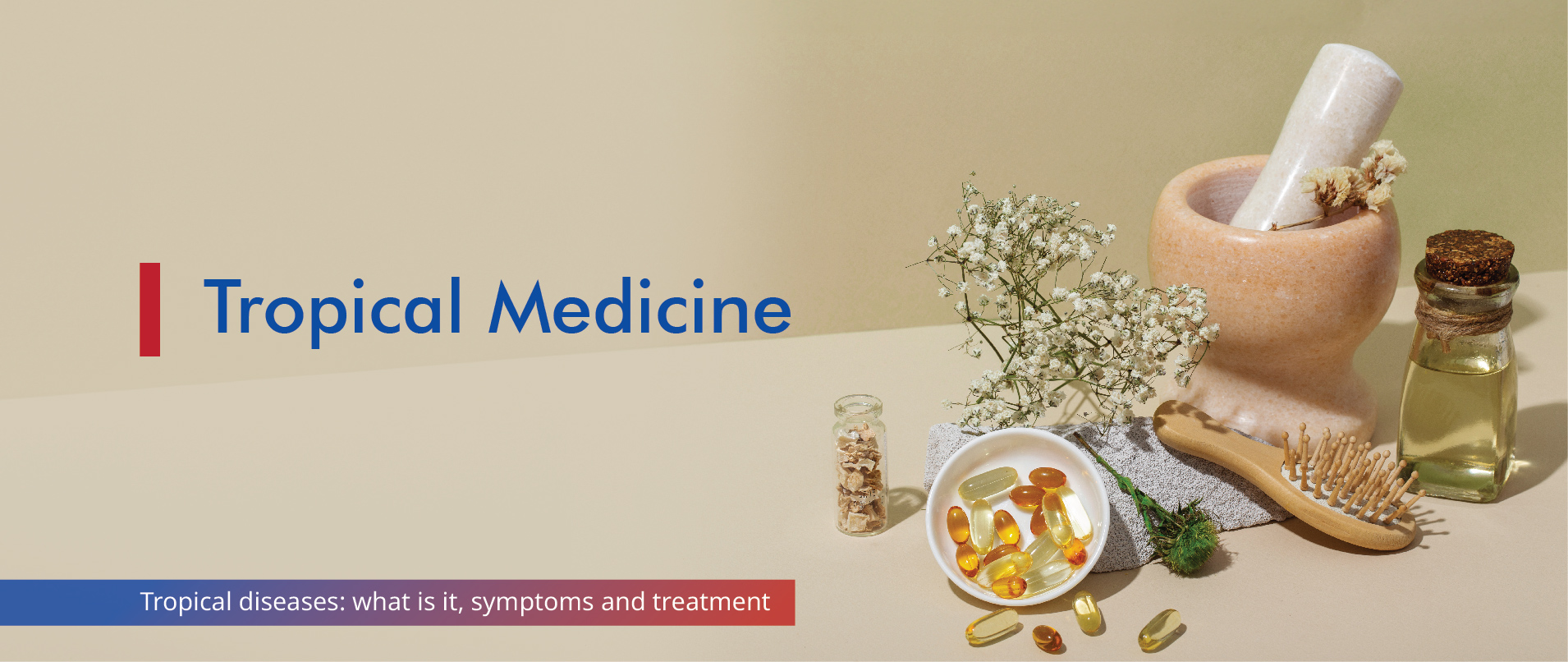Have you heard about tropical diseases? Do you know these diseases affect individuals residing in or travelling to tropical areas of the world, which have warm and humid climates? This climate is an ideal breeding ground for various pathogens, vectors, and parasites that cause these diseases.
Journey with us and explore the hidden dangers of these diseases.
What are the most common types of tropical diseases and infections?
Tropical diseases encompass a wide range of infectious conditions with unique symptoms, transmission methods, and potential complications.
The following are some of the most common tropical diseases and infections:
- Malaria: This life-threatening disease is caused by an organism called Plasmodium, which gets transmitted through the bites of infected mosquitoes. Symptoms include fever, chills, and flu-like illness.
- Dengue Fever: The bite of Aedes mosquitoes causes this infection, which is characterised by sudden high fever, severe headaches, and muscle and joint pain.
- Zika Virus: A mosquito-borne viral infection that can cause mild symptoms. It is particularly dangerous for pregnant women, as it has been linked to congenital abnormalities.
- Chikungunya: Another viral disease transmitted by infected mosquitoes. It causes fever, severe joint pain, and muscle aches.
- Yellow Fever: A viral infection spread by Aedes mosquitoes, marked by fever, chills, headache, and, in severe cases, liver damage and bleeding.
- Chagas Disease: This parasitic infection is caused by the Trypanosoma cruzi parasite, transmitted by triatomine bugs, often called “kissing bugs.” It can lead to potentially life-threatening heart and digestive system complications.
- Leishmaniasis: A group of diseases caused by Leishmania parasites. These diseases get transmitted through the bites of infected sandflies, resulting in skin lesions or internal organ damage.
- Cholera: This small intestine infection develops from some strains of the bacterium Vibrio cholerae. It can be due to ingesting food or water contaminated with the bacteria. Watery diarrhoea, dehydration, or vomiting are the main characteristics of this disease.
- Lymphatic Filariasis: This parasitic infection is caused by thread-like worms transmitted by mosquitoes. It can obstruct the lymphatic system and cause limb swelling (elephantiasis).
- Schistosomiasis: A parasitic infection due to blood flukes acquired through contact with contaminated freshwater, leading to damage to the urinary tract, intestines, liver, and bladder.
- Onchocerciasis (River Blindness): The filarial worm Onchocerca volvulus, transmitted by blackflies, can cause this parasitic infection. It can cause severe skin disease and vision impairment, including blindness.
How are tropical diseases diagnosed?
Diagnosing tropical diseases can be a complex and challenging process, as many of these conditions share similar symptoms, making it difficult to differentiate among them.
However, doctors have developed various diagnostic tools and techniques to accurately detect the underlying cause of an individual’s illness.
A. Medical History and Physical Examination:
The first step in the diagnostic process is to gather a thorough medical history from the patient, including details about their recent travel, exposure to potential disease vectors, and any existing medical conditions. A comprehensive physical examination can also provide valuable clues about the nature of the infection.
B. Laboratory Tests:
Various laboratory tests can help diagnose tropical diseases, such as:
- Blood tests: Blood analysis can detect the presence of specific pathogens, antibodies, or other biomarkers associated with various tropical diseases.
- Microscopic examination: Samples of blood, stool, or other bodily fluids can be observed under a microscope to identify parasites or other infectious agents.
- Molecular tests: Techniques like polymerase chain reaction (PCR) can detect the genetic material of pathogens, enabling rapid and accurate diagnosis.
C. Imaging Techniques:
Depending on the suspected condition, doctors may utilise various imaging technologies, such as:
- Ultrasonography: This imaging detects organ damage or abnormalities associated with certain tropical diseases, such as Chagas disease or schistosomiasis.
- Computed tomography (CT) or magnetic resonance imaging (MRI): These advanced imaging techniques can help identify lesions, inflammation, or other changes in the body that may be indicative of tropical diseases.
D. Biopsy and Tissue Sampling:
Doctors may sometimes collect a small tissue or fluid sample from the affected area to further analyse a disease, such as leishmaniasis or onchocerciasis.
How are tropical diseases treated?
The treatment of tropical diseases can vary widely and depend on the specific pathogen or condition involved, the illness’s severity, and the affected individual’s overall health status. However, there are several general approaches to the management of these infectious diseases:
1. Antimicrobial Therapy:
Bacteria, viruses, or parasites cause many tropical diseases. appropriate antimicrobial agents, such as antibiotics, antivirals, or antiparasitics, are the cornerstone of treatment. The specific prescribed medication will depend on the causative agent and the stage of the disease.
2. Supportive Care:
In addition to targeted antimicrobial therapy, doctors may employ various supportive measures to manage the symptoms and complications associated with tropical diseases. These may include:
- Fluid and electrolyte replacement
- Pain management
- Fever reduction
- Nutritional support
- Monitoring and management of organ dysfunction
3. Vector Control:
For diseases transmitted by insects or other vectors, such as mosquitoes or sandflies, we should emphasize on the vector control measures to reduce the risk of transmission, says Dr. John Paul M, Tropical Medicine & Infectious Disease expert at SPARSH Hospital. These measures can include:
- Use of insecticides or repellents
- Elimination of breeding grounds
- Promotion of personal protective measures, such as the use of bed nets
4. Vaccination:
Vaccines may sometimes be available to prevent certain tropical diseases, such as yellow fever or cholera. Vaccination can be a highly effective tool for controlling the incidence and severity of these infections, especially in high-risk areas.
5. Surgical Intervention:
In rare instances, surgical procedures may be necessary to manage the complications or sequelae of certain tropical diseases, such as removing skin lesions or treating organ damage.
Reference:







